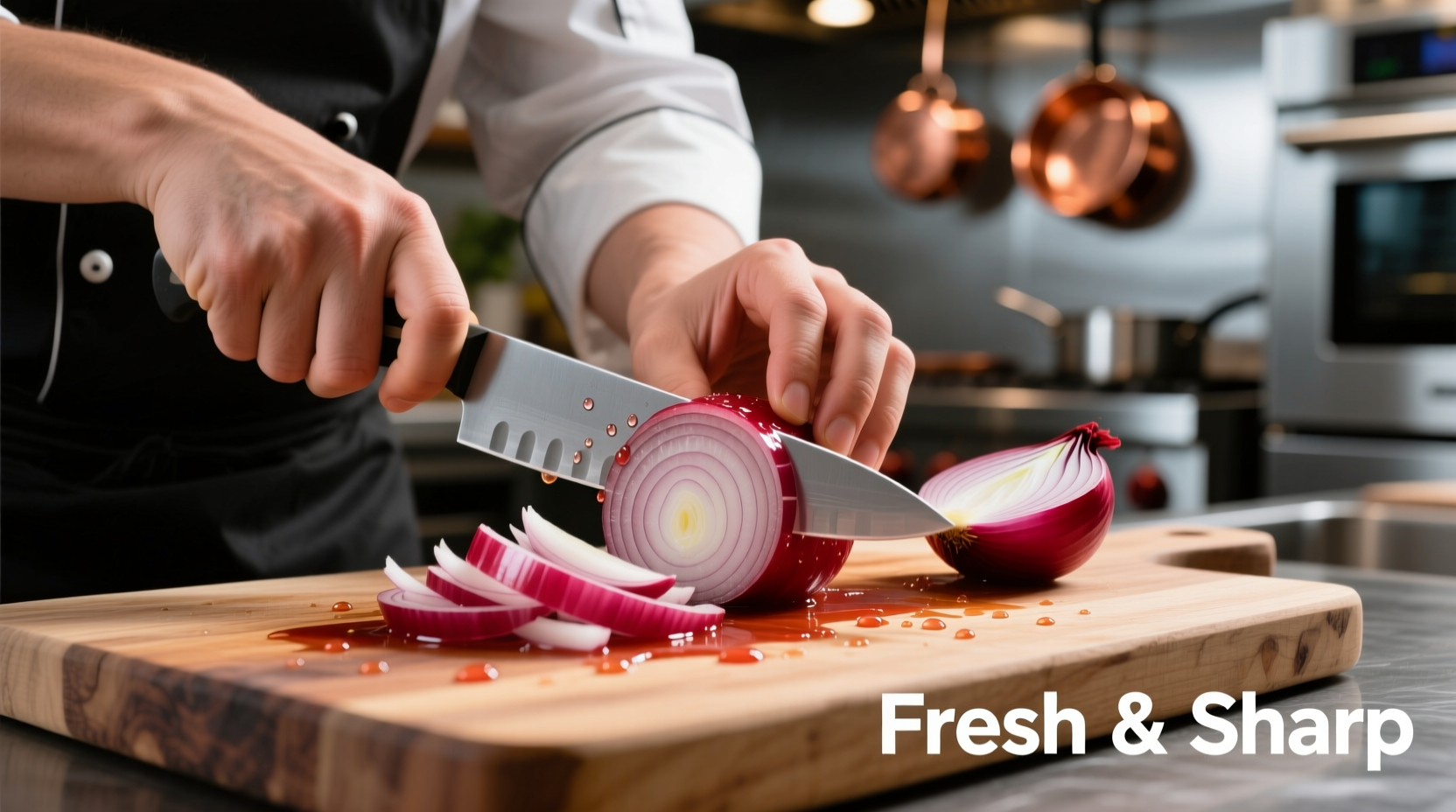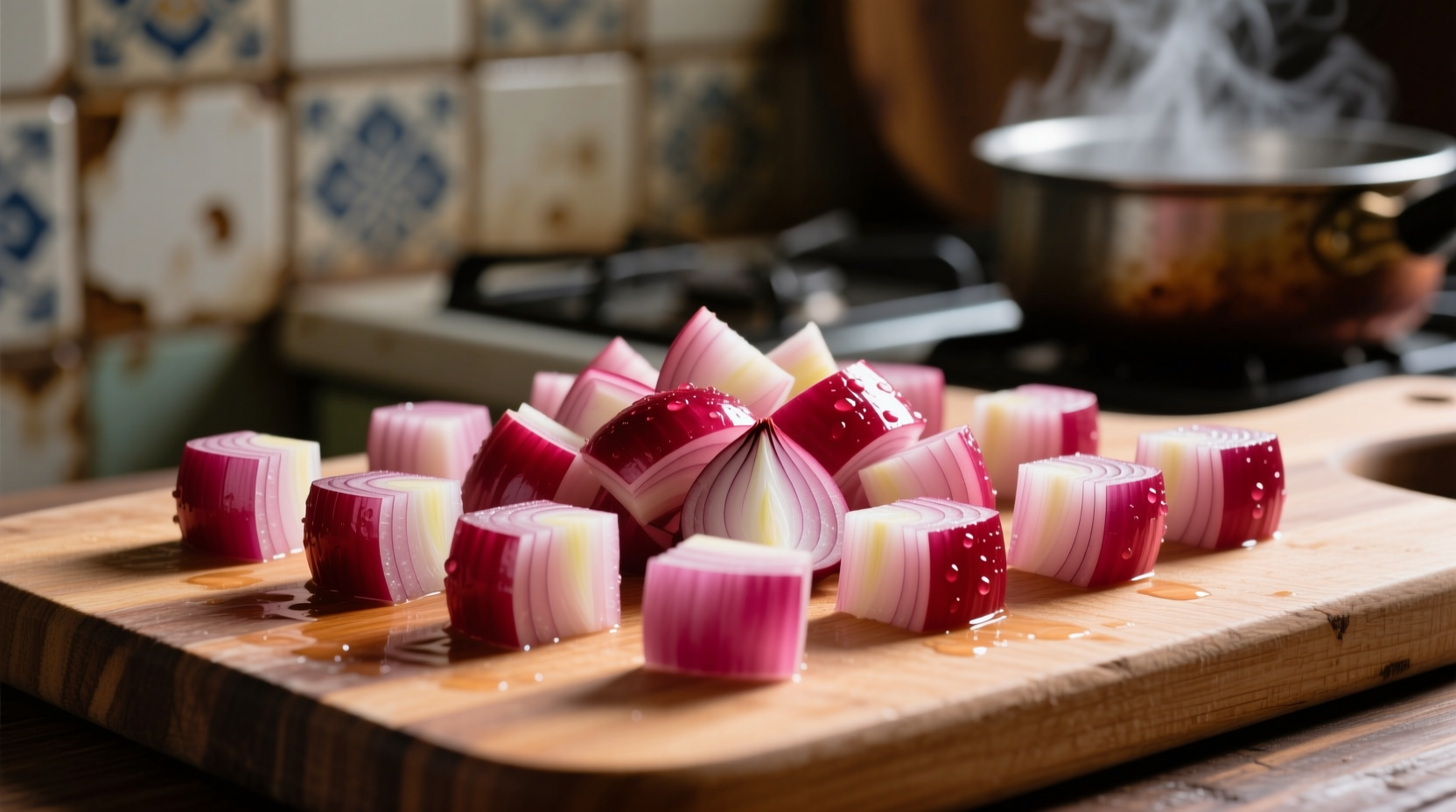Diced red onions deliver vibrant color, mild sweetness, and crisp texture that elevates salads, salsas, and grilled dishes without overwhelming heat. Properly diced, they maintain shape better than white or yellow varieties and offer superior visual appeal while providing essential antioxidants and vitamin C.
Ever wonder why professional chefs reach for red onions when crafting vibrant salsas or elegant salads? The secret lies in their unique balance of flavor and visual impact. Unlike their sharper white counterparts, diced red onions provide that perfect pop of color while maintaining a milder, slightly sweeter profile that enhances rather than dominates your dish. Whether you're preparing a quick weeknight meal or entertaining guests, understanding how to maximize this versatile ingredient transforms ordinary recipes into extraordinary culinary experiences.
| Onion Variety | Flavor Profile | Best Culinary Uses | Storage Duration (Diced) |
|---|---|---|---|
| Red Onion | Mild, slightly sweet, less pungent | Raw applications: salads, salsas, garnishes | 5-7 days refrigerated |
| White Onion | Sharp, intense, more pungent | Cooked dishes: soups, stews, Mexican cuisine | 3-4 days refrigerated |
| Yellow Onion | Strong when raw, sweet when cooked | Versatile: sautéing, roasting, caramelizing | 4-5 days refrigerated |
Mastering the Art of Dicing Red Onions
Professional chefs consistently choose red onions for raw applications because their cellular structure holds shape better after dicing. The secret to perfect diced red onion begins with proper technique: chill your onion for 30 minutes before cutting to reduce enzyme activity that causes tearing. Using a sharp chef's knife, remove both ends, peel the outer skin, cut in half through the root, then make horizontal and vertical cuts while leaving the root intact for stability. This method yields uniform 1/4-inch pieces that maintain integrity in your dishes.
For those wondering how to dice red onion without crying, try working near running water or under a vent hood. The sulfur compounds responsible for eye irritation disperse more quickly in these conditions. Alternatively, freeze your cutting board for 15 minutes before starting—this simple trick significantly reduces tear production while preserving the onion's crisp texture.
When Red Onions Shine: Culinary Applications
Understanding what diced red onion is good for separates novice cooks from seasoned professionals. Their mild flavor profile makes them ideal for raw applications where white onions would prove too harsh. Consider these perfect pairings:
- Salads and slaws: Their vibrant purple hue creates visual contrast against greens and proteins
- Salsas and pico de gallo: They maintain crispness better than other varieties when mixed with acidic ingredients
- Garnishes for tacos and grilled meats: The color contrast makes dishes restaurant-quality
- Pickled applications: They absorb flavors beautifully while retaining their striking color
Food scientists at the University of California note that red onions contain anthocyanins—the same antioxidants found in blueberries—that actually increase in bioavailability when chopped. This means diced red onion nutrition offers more health benefits than whole onions, providing 23% of your daily vitamin C needs in just half a cup.
Storage Secrets for Maximum Freshness
Many home cooks struggle with how long does diced red onion last before becoming soggy or developing off-flavors. Proper storage extends freshness significantly:
- Place diced onions in an airtight container with a paper towel to absorb excess moisture
- Store in the refrigerator's crisper drawer away from strong-smelling foods
- For longer storage, submerge in ice water for 10 minutes before refrigerating to maintain crispness
- Use within 5-7 days for optimal flavor and texture
The USDA Food Safety and Inspection Service confirms that properly stored diced red onions maintain quality for up to one week, compared to just 3-4 days for white onions. This extended shelf life makes them particularly valuable for meal preppers seeking to maximize ingredient efficiency.

Strategic Substitutions and Limitations
While versatile, red onions aren't universally interchangeable. Understanding diced red onion vs white onion differences prevents culinary mishaps:
Use red onions when you want visual appeal and milder flavor in raw applications. Substitute with white onions only when cooking thoroughly, as their sharper flavor mellows with heat. Never substitute red for white in traditional Mexican pico de gallo—authentic recipes specifically require white onions for their distinctive bite. For French onion soup, yellow onions remain superior due to their higher sugar content that caramelizes beautifully.
Professional chefs follow this rule: if the recipe specifies "raw" preparation, stick with red onions for optimal results. Their lower pyruvate content (measuring pungency) creates that perfect balance between flavor impact and palatability that makes diced red onion in salads so universally appealing.
Pro Tips for Culinary Success
Transform your cooking with these chef-recommended techniques:
- Quick-pickle method: Soak diced red onions in equal parts vinegar and water with pinch of sugar for 15 minutes to mellow sharpness while enhancing color
- Color preservation: Add acidic ingredients like lime juice immediately after dicing to maintain vibrant purple hue
- Flavor balancing: When using in substantial quantities, sprinkle diced onions with salt and let sit 5 minutes before rinsing to reduce raw bite
- Texture optimization: For salad applications, dice slightly larger (1/3-inch) to maintain structural integrity when tossed
Remember that how to use diced red onion effectively depends on your desired outcome. For maximum visual impact in composed dishes, arrange pieces cut-side up. When mixing into salads or salsas, smaller dice distributes flavor more evenly. Understanding these subtle distinctions elevates your cooking from good to exceptional with minimal additional effort.











 浙公网安备
33010002000092号
浙公网安备
33010002000092号 浙B2-20120091-4
浙B2-20120091-4